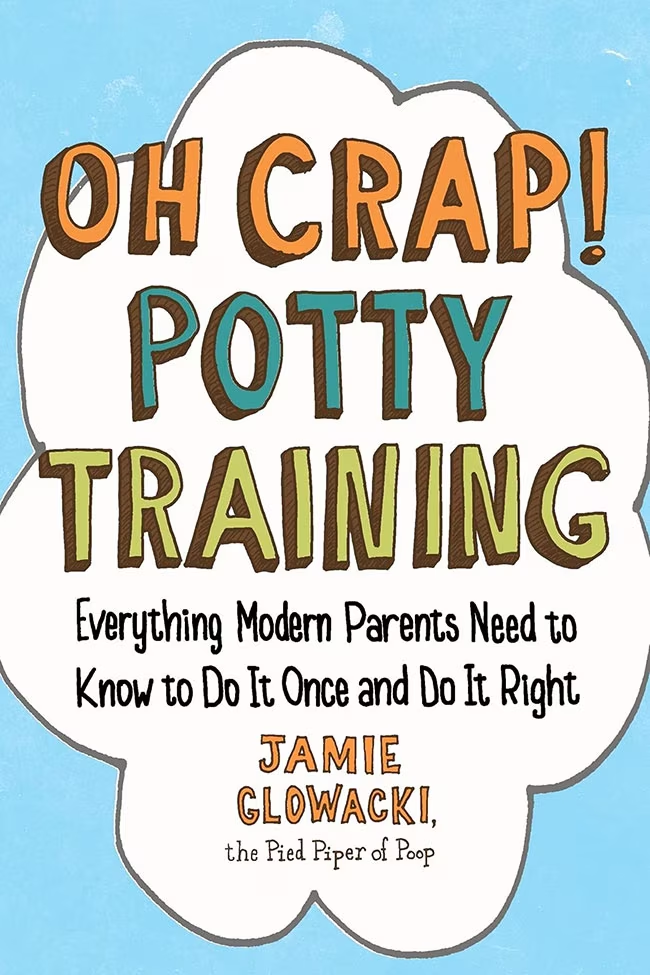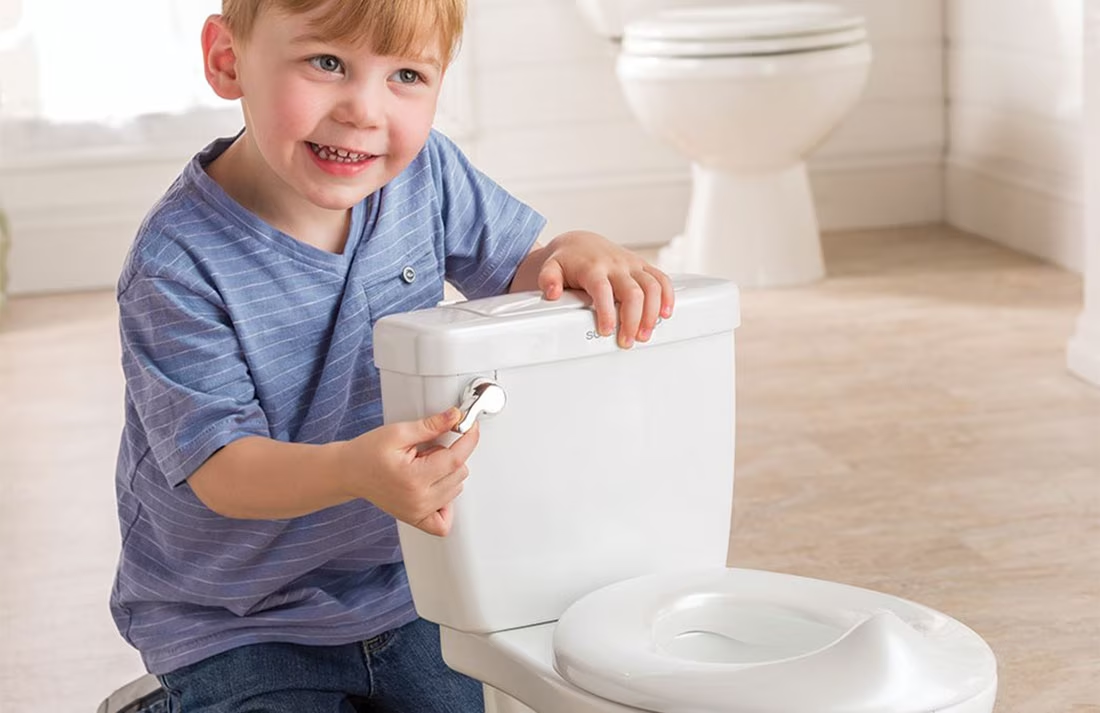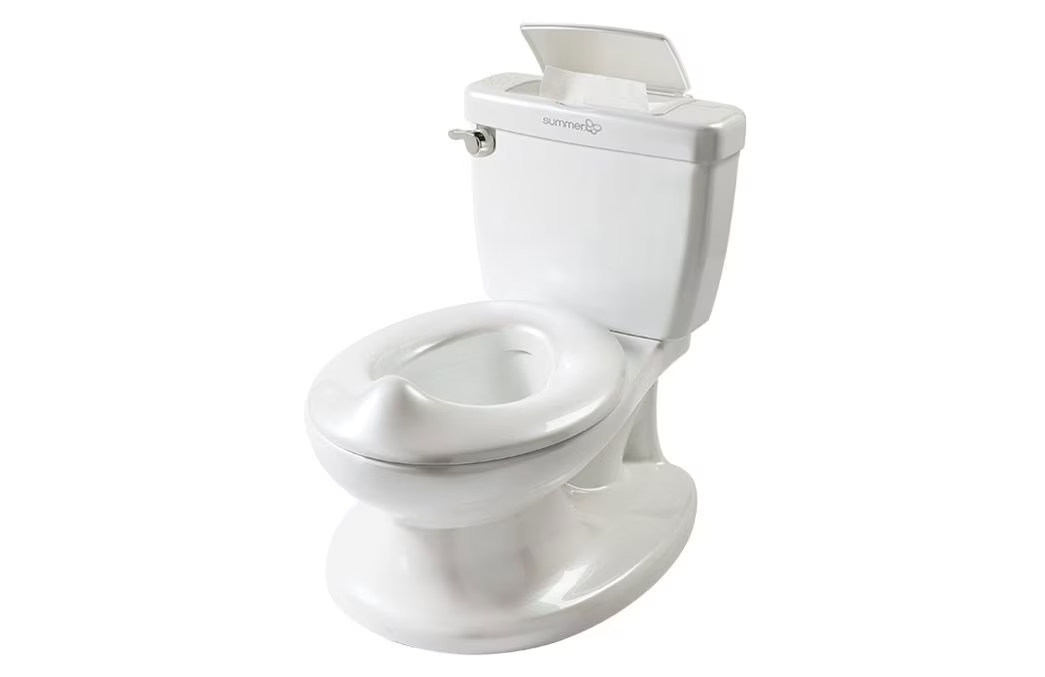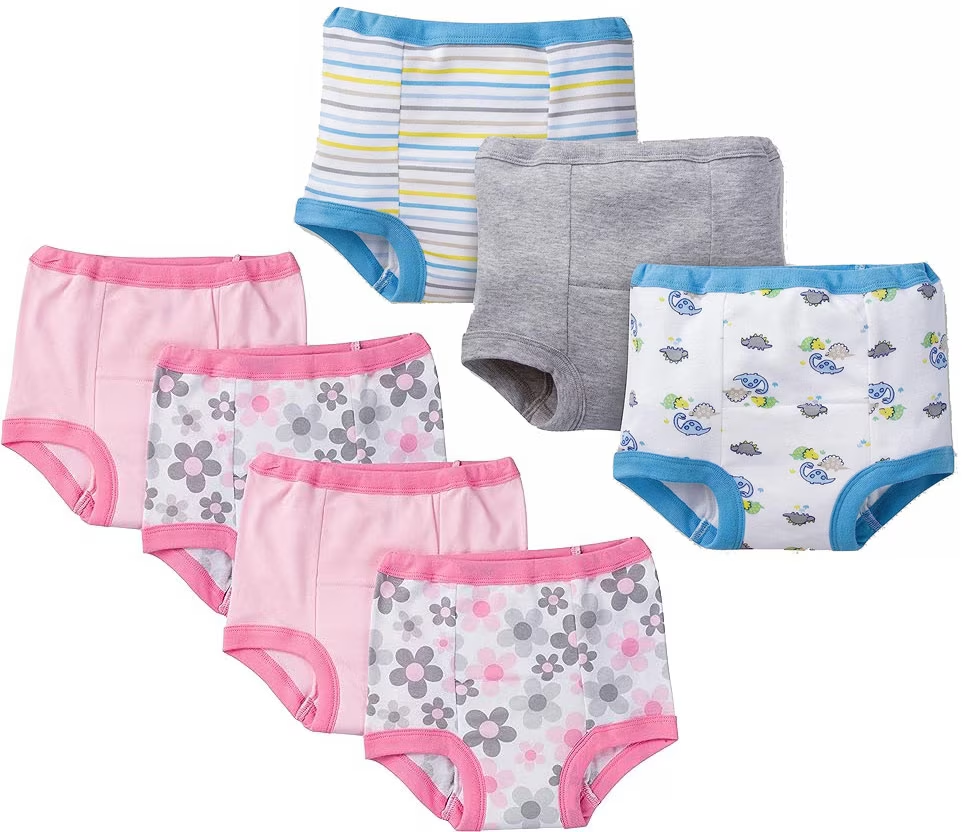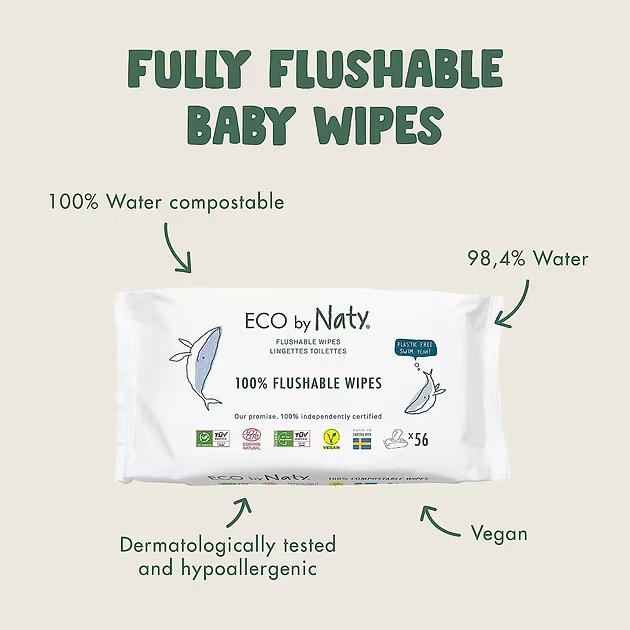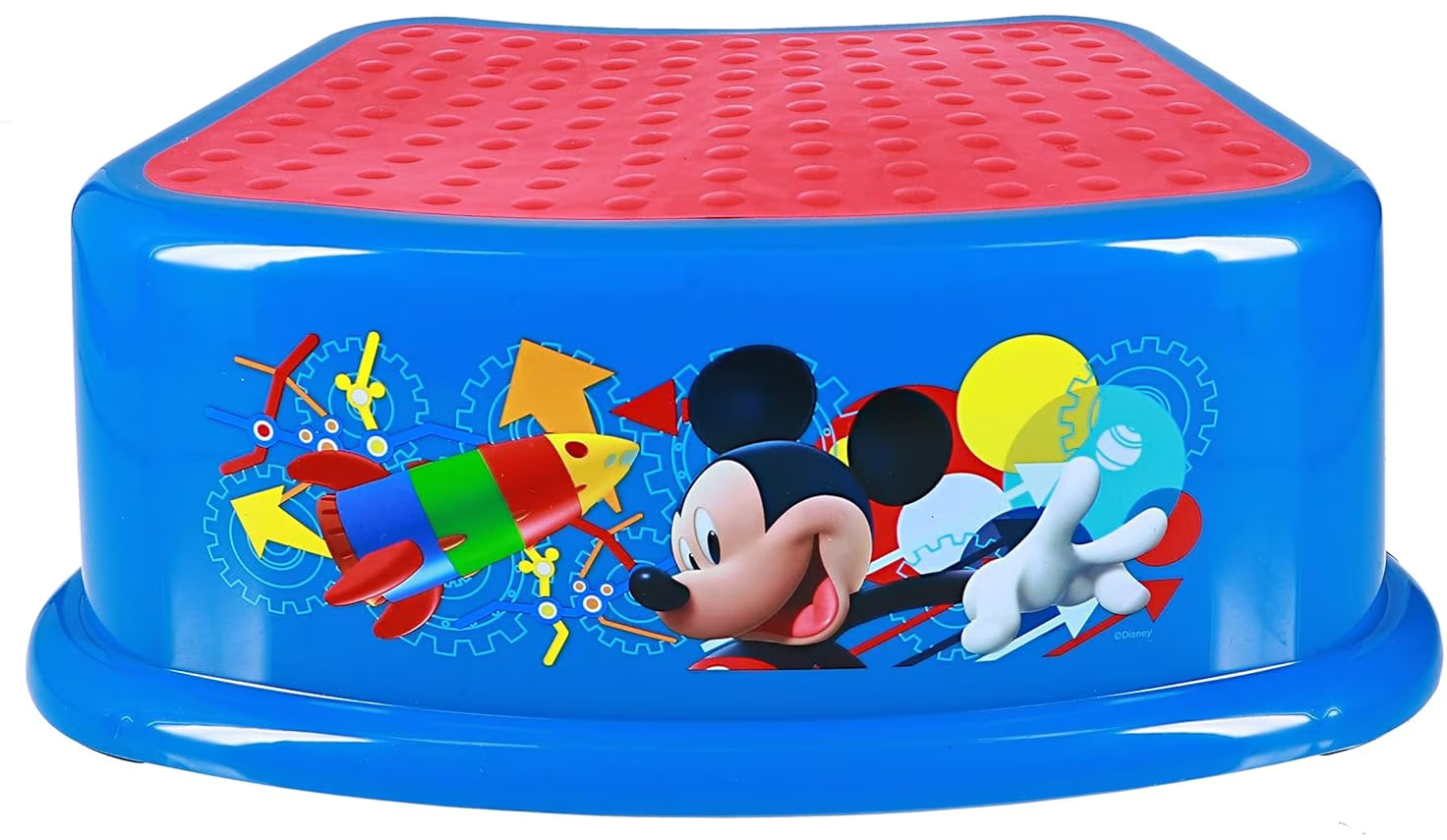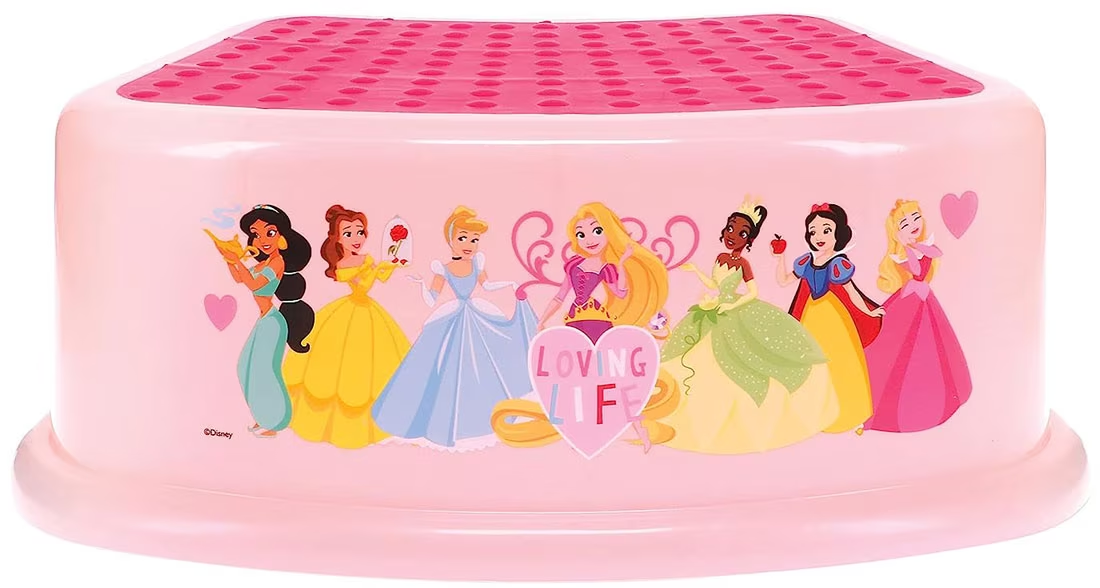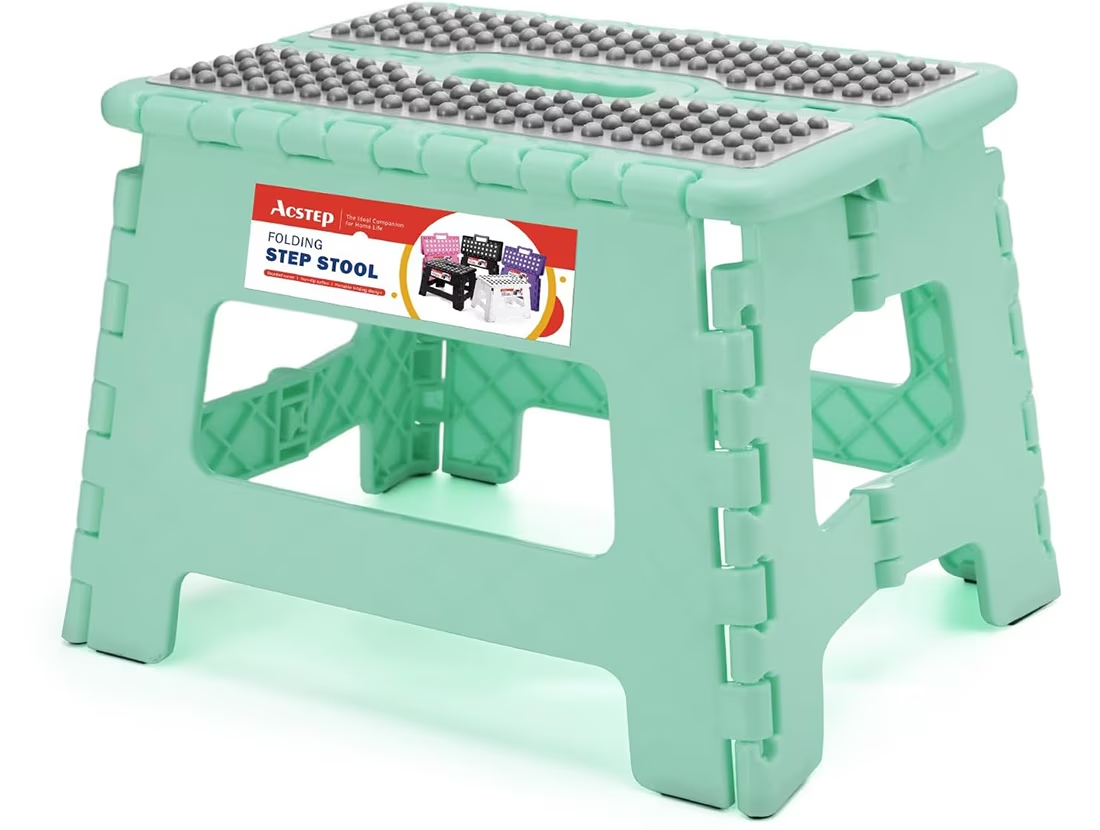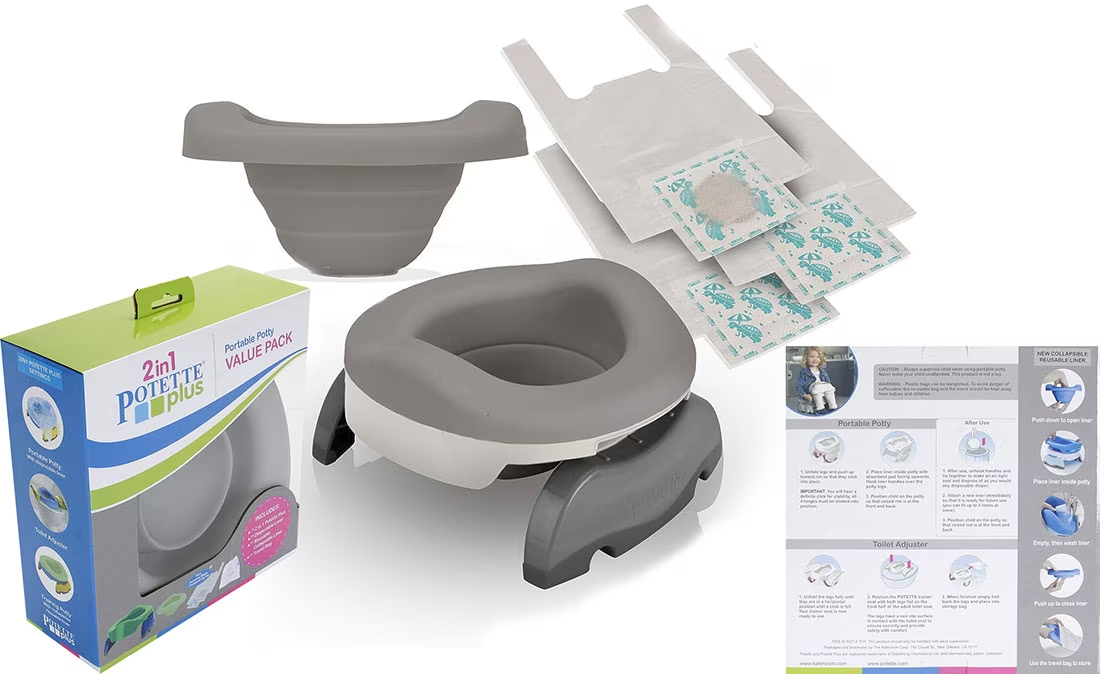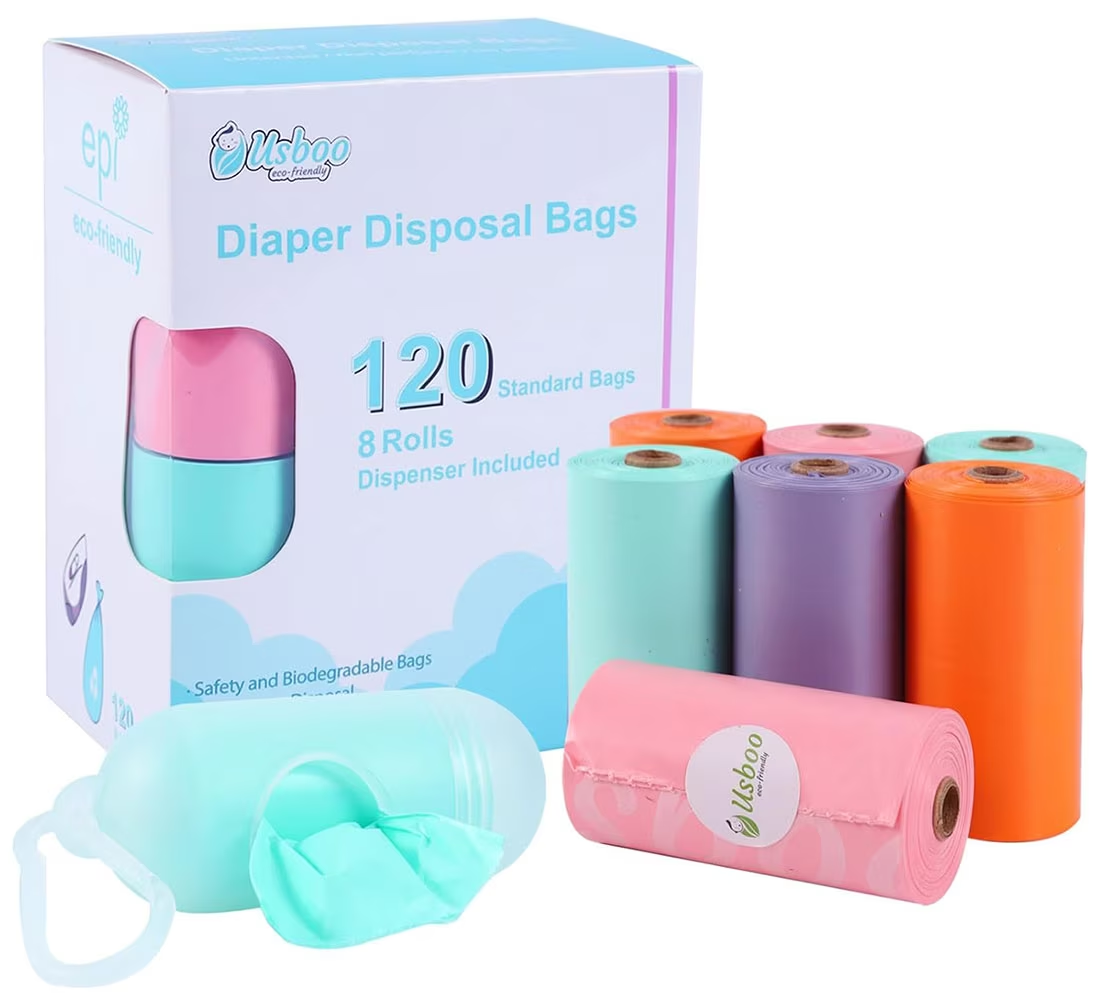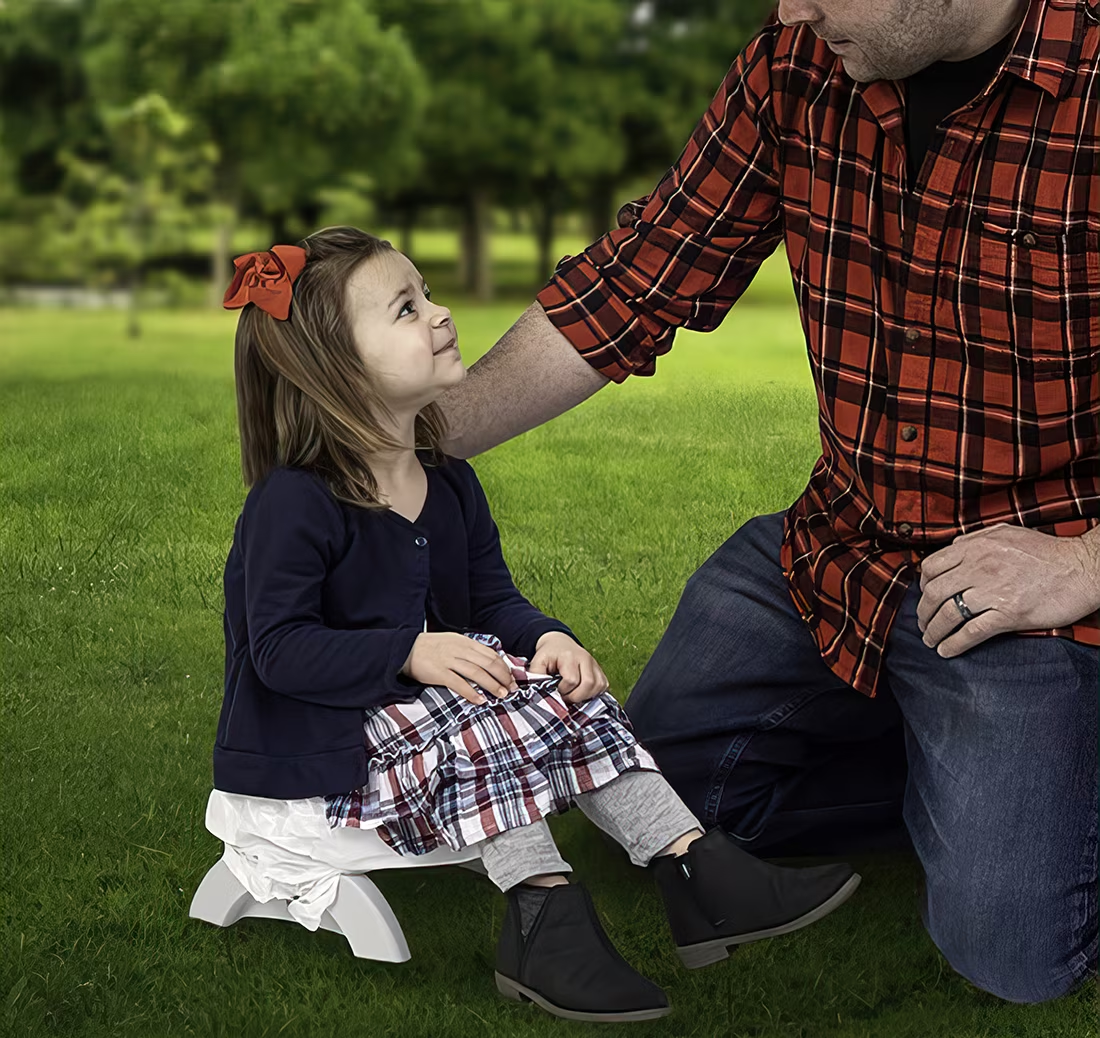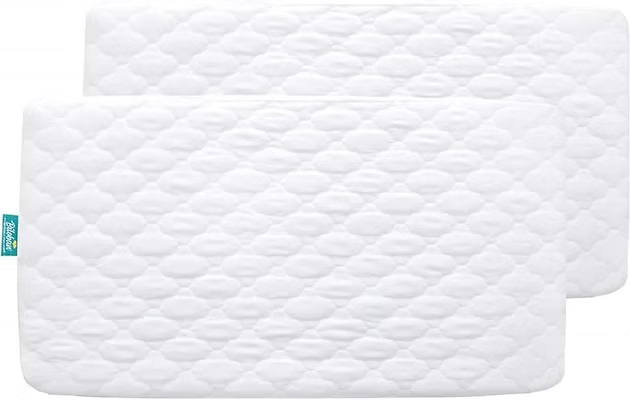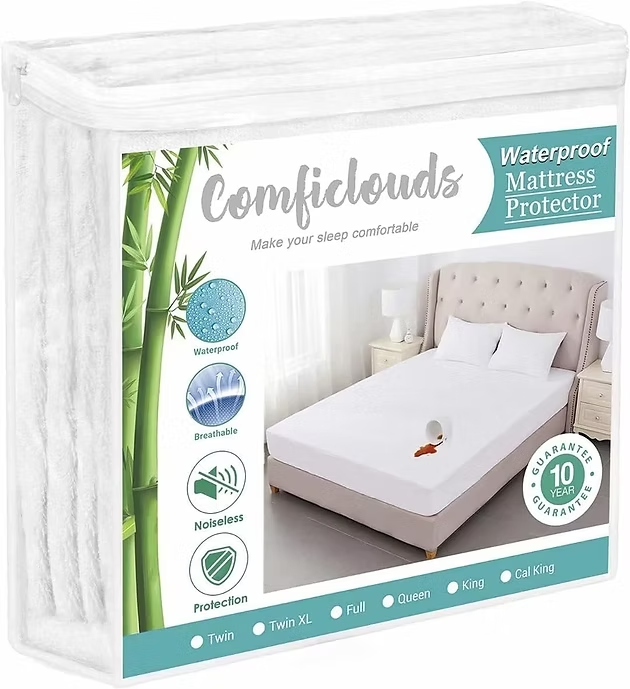The Blog
Master Potty Training: Oh Crap Method with Summer Infant My Size Potty
Ultimate Step-by-Step Guide for Fast, Easy and Effective Toddler Toilet Training
Potty training is a significant milestone in a toddler's life, one of which your child will be very proud of. And if you're doing this for the first time, it can be very overwhelming! It took me a while to figure out how to do it. People give you all kinds of advice, some of them contradictory, and if you're anything like me, you probably don't know where to start.
Maybe you've tried already, and it's not working. Maybe you've bought a bunch of gadgets and books, even videos, wasting a bunch of money trying to potty train, and nothing is working. The same happened to me.
Also, I was expecting my second baby when my first child was of potty training age, making my overwhelm increase, so I kept putting it off. Until one day, I knew I couldn't continue this way. My son was now 3 1/2 years old! And too big to be placed on public diaper changers! I was embarrassed that I hadn't succeeded in my potty training attempts so far.
Luckily, I ran into the book "Oh Crap! Potty Training" by Jamie Glowacki, when I saw it highly recommended online by several mums. At first, I dreaded having to read the book, but it turned out to be quite a fun read! It made me laugh so much! and going through each chapter was a breeze.
So I am happy to share with you the main insights and the best tools I used to potty train both of my children!
And not only did I potty train them successfully... I potty-trained them both at the same time!
In this detailed step-by-step guide, we'll explore the core principles of the "Oh Crap!" potty training method and I will provide you the best tips on what to do and what not to do when potty training your child.
Step 1: Assess Readiness for Potty Training
Is your child ready? Sometimes it is very easy to tell. Other times, not so much. In general, there are signs that will clue you in to your child's readiness to potty train. Most toddlers show signs of readiness between 18 and 30 months, but every child is different. Look for the following indicators:
Interest in the bathroom: Your child might show curiosity and might watch or imitate their family members, follow you to the bathroom, flush the toilet several times, and want to wash their hands in the sink with you.
Pulling on diaper: If your child tugs on or pulls of their diapers when soiled, he/she is starting to feel uncomfortable and might be ready to toilet train.
Longer dry periods: This is also a good indicative of readiness and increased bladder capacity.
Verbally expressing needs: Some toddlers start to communicate when they want to pee or poop even though they have their diaper on, or start to demand having their diaper changed.
Step 2: Gather Essential Potty Training Supplies
To start potty training your child, you need to be prepared. This will make the process smooth and comfortable for you and your child. I highly recommend the following products, which I found to be the most essential, best quality and affordable!
Summer Infant My Size Potty - The Best Training Toilet
Unlike other potty seats, this actually resembles a real toilet. It's available in several colors too! I bought a white one for my son, and a pink one for my daughter.
It was the only potty seat I found to fulfill it's purpose! Other potties have tons of bells and whistles, like toys, sounds, lights, etc. I sadly bought a few of them before, and my children were more interested in playing in the potty than using it. It was too distracting.
But the Summer Infant by Ingenuity My Size Potty looked like the real deal, and the only extra fun characteristic of it is the "real flushing sound" it makes when you push the handle down, like a real toilet seat! My children loved this. It made the experience of using the toilet so realistic and helped them feel like mummy and daddy all grown up using the bathroom. Plus, it has a little compartment to store wipes, and is very easy to clean.
The splash guard for boys is the only feature I wasn't too fond of back then and I ended up removing it all together. It fell off and it was hard and scratchy (Nowadays I think they have fixed this in the updated version!) So I just taught my son to push his pee down on the bowl. In spite of this minor flaw back then, this definitely was the best potty for us.
Training Pants and Big Kid Underwear
Some kids enjoy the experience of going to the store to choose and purchase their own underwear. However, my children really didn't care about it. I took them and they weren't excited. So I just ordered their underwear online, making sure it had their favorite characters or colors.
Note: I do not recommend using potty training diapers that kids have to pull up. Kids are smart and realize it is still "a diaper" because it feels like one. I tried that too, and it only delayed potty training.
Unlike diapers, cloth underwear encourages potty training because when a child has a potty accident, he/she feels more uncomfortable and becomes aware that he/she can no longer pee or poo in their pants because it feels bad. There are many brands and designs but my favorite ones are Gerber Training Pants for Boys and Girls.
Flushable Wipes for Hygiene
The transition from using wipes to toilet paper takes a while, depending on your child's age. So to avoid problems with your toilet once they go from the potty seat to a toilet, it is recommended to use flushable wipes that are soft on your child's skin. I recommend Eco by Naty Flushable Wipes.
Step Stool for Independence
This will be necessary for washing their hands in the bathroom sink after they use the potty. And once they transition from the My Size Potty to the real toilet, they will need the step stool there also.
I like two types of step stools: Foldable (for reduced space areas), and Single Step Stools. Both must have a non-slip surface.
I personally do not like step stools that have more than one step (some have two or three) because my children would lose their balance and fall.
With one step, it is safer, because it was easier for them to go up and down without suffering a nasty accident in the bathroom.
Travel Kit: Potty, Liners & Bags for Outings
If you are out and about a lot, you will definitely want to carry around a compact, easy-to-clean travel potty that you can use by itself but also on top of a normal toilet seat.
My favorite one is the Potette Plus Travel Potty and Liners. It was an absolute lifesaver on holidays and outings! It comes with bags and a carrier for easy cleaning and transporting. Also carry plastic diaper disposal bags! They're useful for storing soiled clothes as well.
Step 3: Going "Commando" - The Oh Crap Method Secret
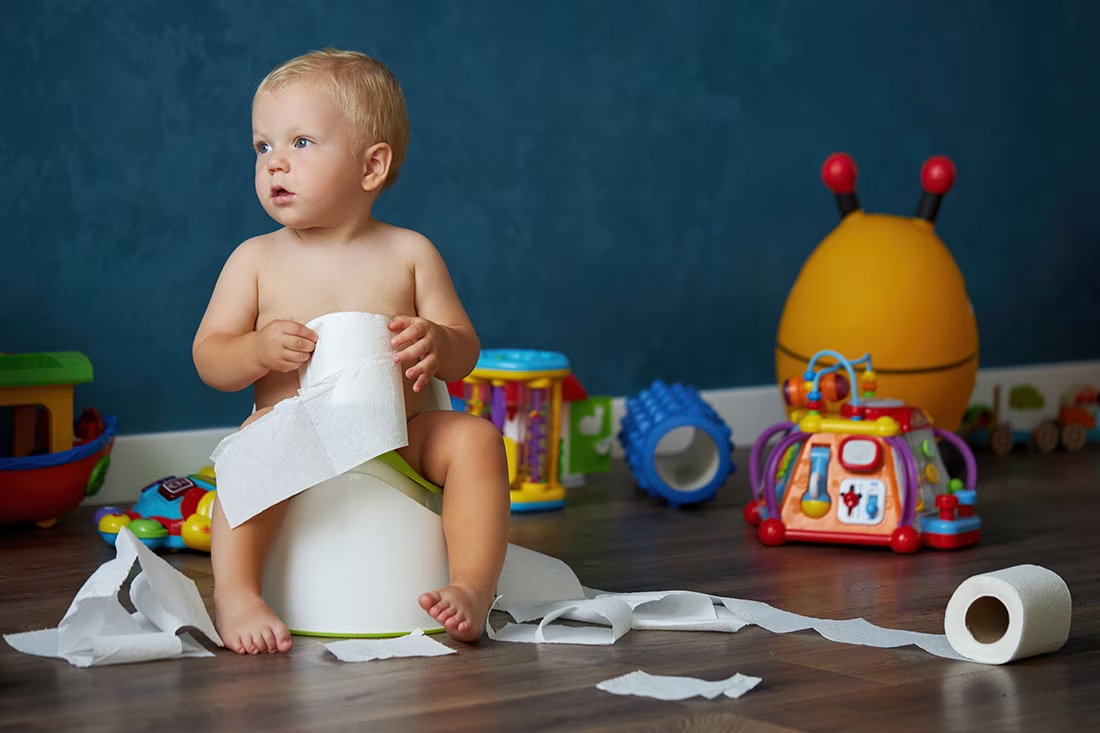
This is the secret weapon of the "Oh Crap!" potty training method! It takes 1 to 2 days of "no-clothes time" to begin potty training your child. The first three days of potty training, you will let your child go without pants, diaper or underwear for several hours at home. It's important to clear your schedule for 3 days, in which you will observe your child to detect signs of when he/she is about to go poo/pee.
This allows your child to become more aware of the physical sensations associated with using the potty, and helps establish the connection between the urge and the action, and where to place the urine and poop. Look for cues like squatting, crossing legs, or holding their genital area. When you notice these signs, quickly guide them to the training potty, using positive enthusiastic language and reinforcing the idea that this is where they should go.
At night, you will put on their diaper back on for sleeping (for now), and you might notice that your child has a certain attachment to their "poop". This is normal for some children, and he/she will probably hold on until the diaper is on. But with gentle guidance and reinforcement, during those 2 or 3 days the child will understand that letting go in the potty is a good and rewarding thing.
Once your toddler finally goes potty on the training toilet, praise him/her happily, no matter how big the success is (even a trickle of pee, or part of the poop fell in and not all, lol).
Why it's Important to Never Say "It's OK" when Accidents Happen
Accidents might happen, like peeing or pooping out of the potty because they still don't understand or he/she didn't make it there on time, or you got distracted. Be firm but encouraging, indicating again where they should go.
Never ever say "It's ok" because it translates as "it's not important" to potty in the right place, which might have a negative effect on the potty training. You have to say something like "Sweetie, remember we have to go potty there, let's try again, I know you'll do great next time!", and be careful not to enter into a power struggle with your child.
Step 4: Establish a Consistent Potty Routine
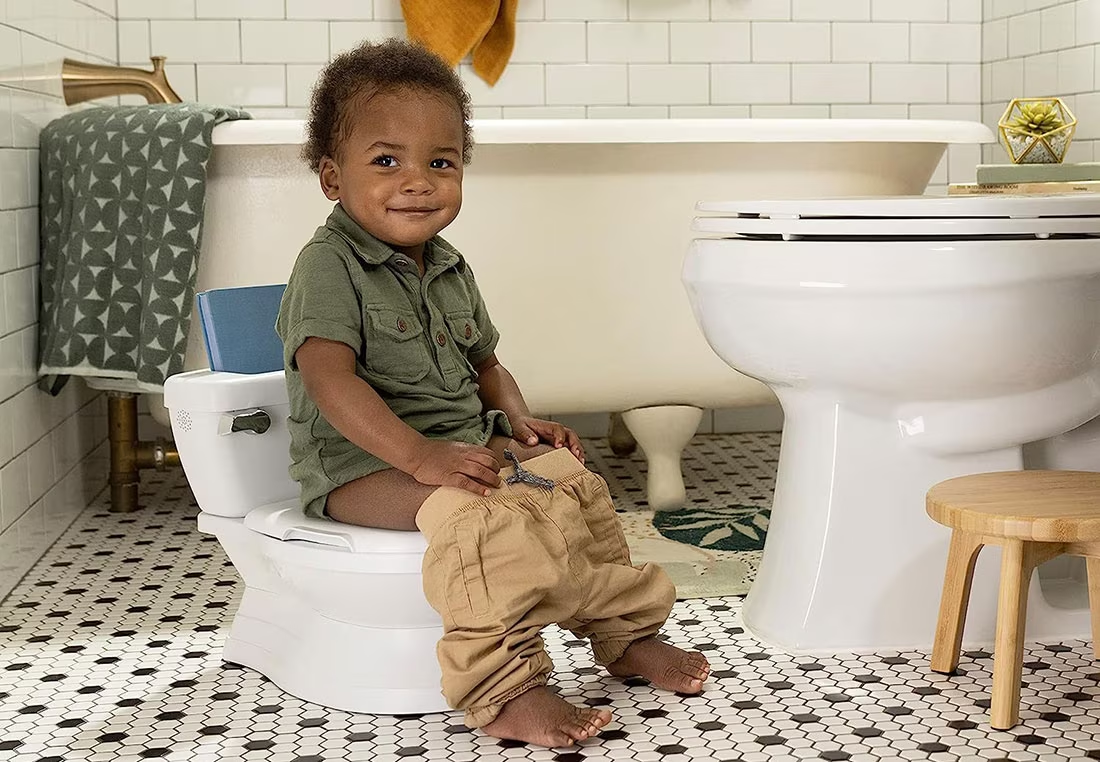
This is another crucial step of potty training, and sticking to it might feel like a challenge, but I promise you one day you will no longer have to think about potty training once the routine is established.
This is the next step to follow after those 3 days of going commando. A reward for finally using the potty after those days, is using their big boy or big girl underwear at last. Try going out to nearby places.
And take your child potty during these crucial moments:
In the morning upon waking up
Whenever you leave a place
Whenever you arrive to a place
In the middle of the day
In the afternoon
Right before bed
This has to be done like clockwork, without missing a beat. I know, it can be a bit tiresome, but once established, you will have reinforced the need and the habit of going potty for your child, to avoid accidents.
Step 5: Night Time Potty Training Success
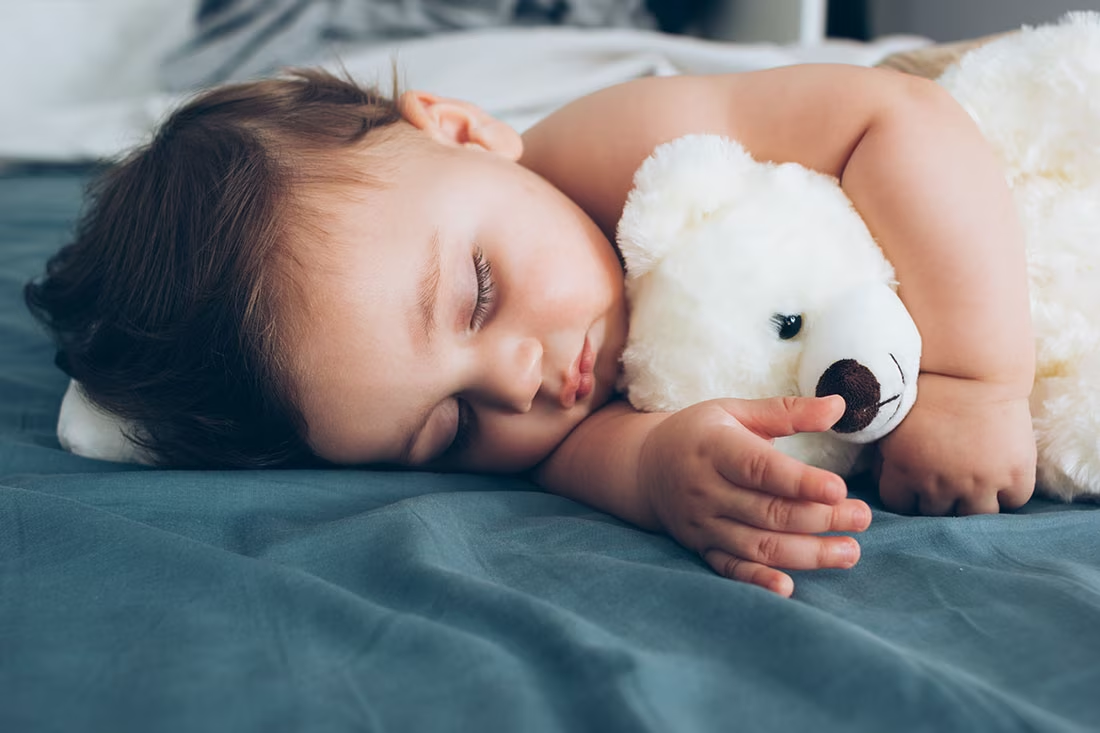
Night time dryness may take longer to achieve for some children. I got lucky with my daughter, who from day 1 of potty training, stayed dry every night from then on, and only had a couple of accident across the years and she's 6 now.
My son, on the other hand, took a while and I did have to follow the book's advice on night time potty training, by taking him to pee in the middle of the night every night. It also helps to limit liquid intake starting at 6pm until before going to sleep.
Your child's body make need time to adjust to holding urine throughout the night. It is normal to have accidents at first during the night though, so avoid punishment or negative reinforcement.
The book suggests waking up to take your child to the potty in the middle of the night, until it becomes evident to your child's body that they need to wake up to go potty, or until they can hold the pee through the night.
It is more difficult to achieve with heavy sleepers, though, so don't feel bad if it takes a long time for your child to stay dry at night. I recommend placing waterproof fitted sheets for toddler bed or twin bed, under your child's bed sheets, to protect the mattress.
Step 6: Always Carry a Kit and Be Ready for Accidents
It feels great to be prepared. You never know when a potty event or accident could happen, and you don't want to be caught off-guard and have nowhere to place soiled clothes, scramble to find a toilet, no clothes to change into, or worse.
To avoid uncomfortable situations, always be prepared with a kit that contains the following:
A travel potty that folds small and fits in your diaper bag
Plastic bags for diapers and soiled clothes
An full extra change of clothes or 2 (including shoes!) in your diaper bag
Potty training is a marathon, not a sprint. It might have taken only 3 days for your child to understand where to place his/her pee and poop, but to be fully potty trained and independent, might take weeks or months. But I promise you, one day you will realize you no longer have to worry about it, as your little one gains independence.
Depending on your child's age and body development, they will continue needing some degree of assistance: wiping their little butt, putting on or taking off their pants and underwear, washing their hands, etc. Foster a sense of independence as you assist them, until you notice they are able to do it all alone.
It is a great sense of accomplishment for your child to be able to go potty. This is why for some children it is "the end of the world" when they have an accident. Be very patient and address accidents calmly.
Remember: Do NOT say "It's okay". Gently remind your child that next time they can do better and that you understand they're still learning, but be firm saying "It's not okay" to pee or poop their pants.
Dealing with Potty Training Setbacks Gracefully
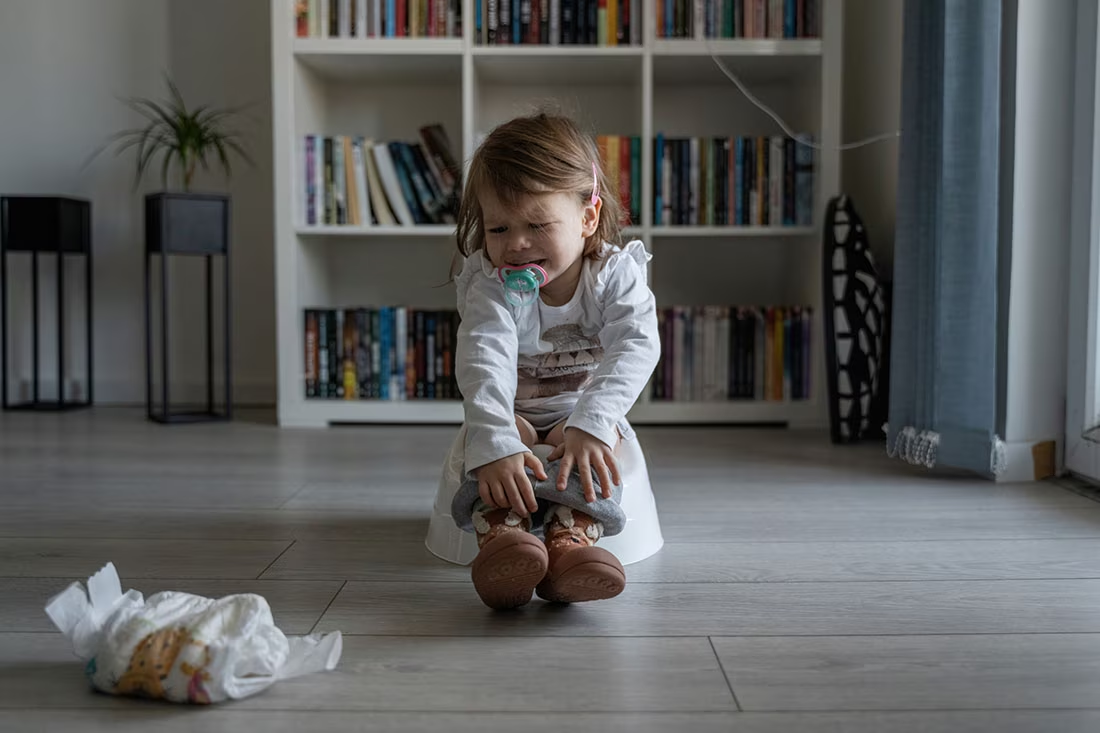
Setbacks are bound to happen, so be patient. Sometimes your child might have a setback and will resist potty training. Sometimes your child might decide he/she is not ready.
My daughter did potty training to perfection for a week at 18 months, and then decided she didn't want to continue and wanted her diapers back. Heartbreaking, I know, but I had to respect her wishes.
The book "Oh Crap! Potty Training" guides you through this process, with a timeline of when to try again, and each child, like I said, is different.
My daughter decided she was ready again when she hit the 24 month mark, so it took quite a few month for her to try again. But then trained so easily. She went dry in 3 days and never looked back. It was awesome.
Consistency is the Key to Potty Training Success
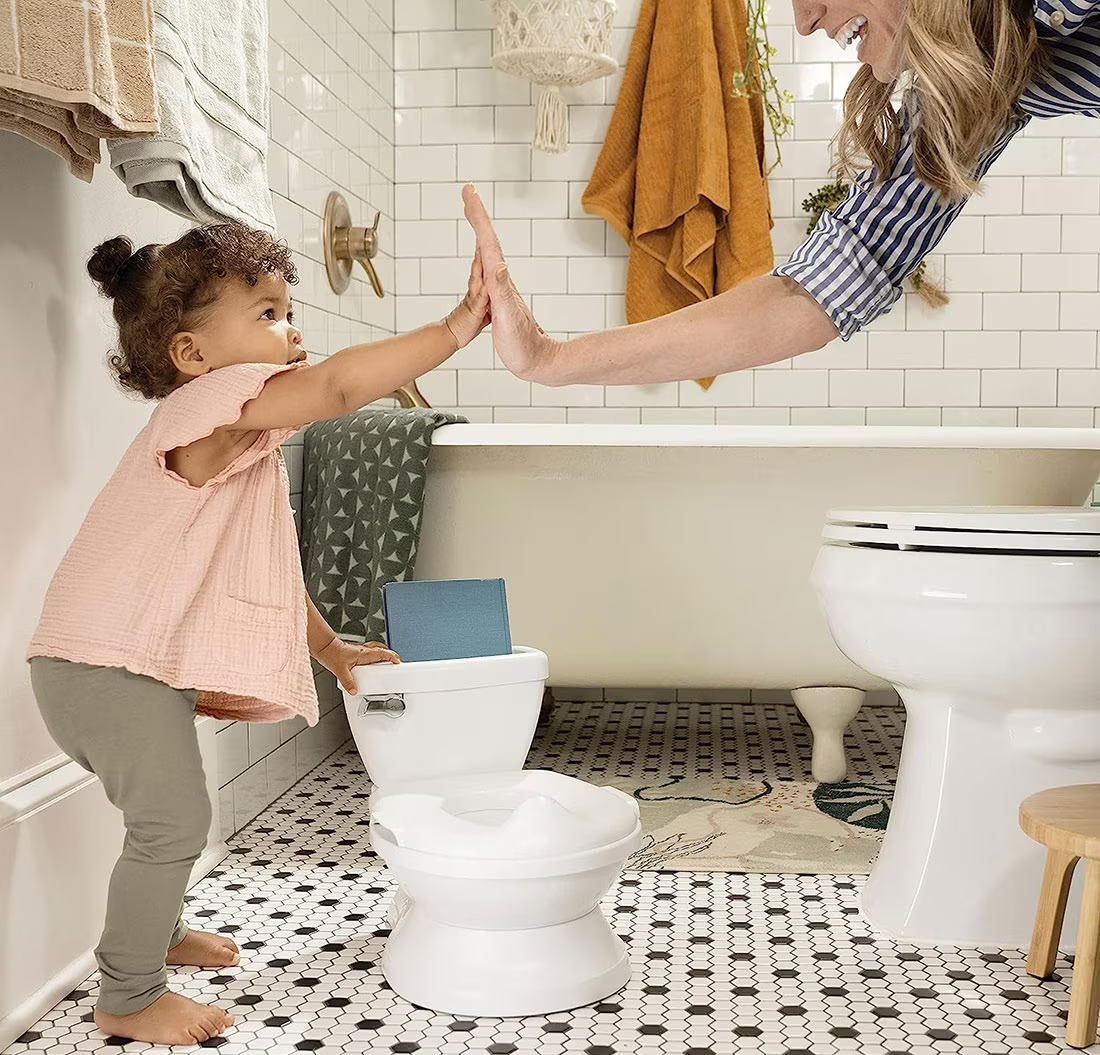
If your follow these clear and easy steps, you will have successfully potty trained your child!
Stay committed to the routine and positive reinforcement, even during outings and travel. This develops a strong association between the potty and going to the bathroom. This significant milestone in a toddlers life can be a smooth rewarding experience for both parents and children by following the "Oh Crap!" potty training method.
By understanding your child's cues, staying patient, and providing positive and firm reinforcement, you can guide your toddler with confidence.
Remember that every child is unique and there may be occasional setbacks, but with love, your child will master this crucial skill. Happy potty training!
Useful Resources and Next Steps
To continue learning about potty training methods and toddler development:
Get the Oh Crap! Potty Training Book by Jamie Glowacki for the complete method, here.
Purchase the Summer Infant My Size Potty HERE for a realistic toilet training experience
Stock up on Training Pants and comfortable underwear for your child
Put together a Travel Potty Kit for successful outings and trips: Portable Potty, Potty Liners & Plastic Bags.
Browse My Complete Collection of tried and tested potty training products
Watch this video for step-by-step guidance!
Watch this follow-up video about Potty Training in 2 Days!
Potty training success depends on consistency, patience, and the right approach for your child's unique personality. Whether you're just starting or dealing with setbacks, the "Oh Crap!" potty training method combined with quality products like the My Size Potty can make this milestone achievable.
Start implementing these potty training tips today, and you'll be amazed at how quickly your toddler gains independence and confidence. The key is to stay committed to the process and remember that every child progresses at their own pace.
Successful potty training is about finding what works for your child and sticking with it. With the right method, tools, and mindset, you can make this transition smooth and rewarding for both you and your toddler.
Free eBooks!

And get access to other free downloads, masterclasses and more! Just enter a valid email below.
You can opt-out anytime.
Comments?
My Instagram Feed
Newsletter
Stay in the loop for new videos and special offers! And receive useful tips. Opt-out anytime.
Created with Systeme.io - Click to build yours for FREE today!





